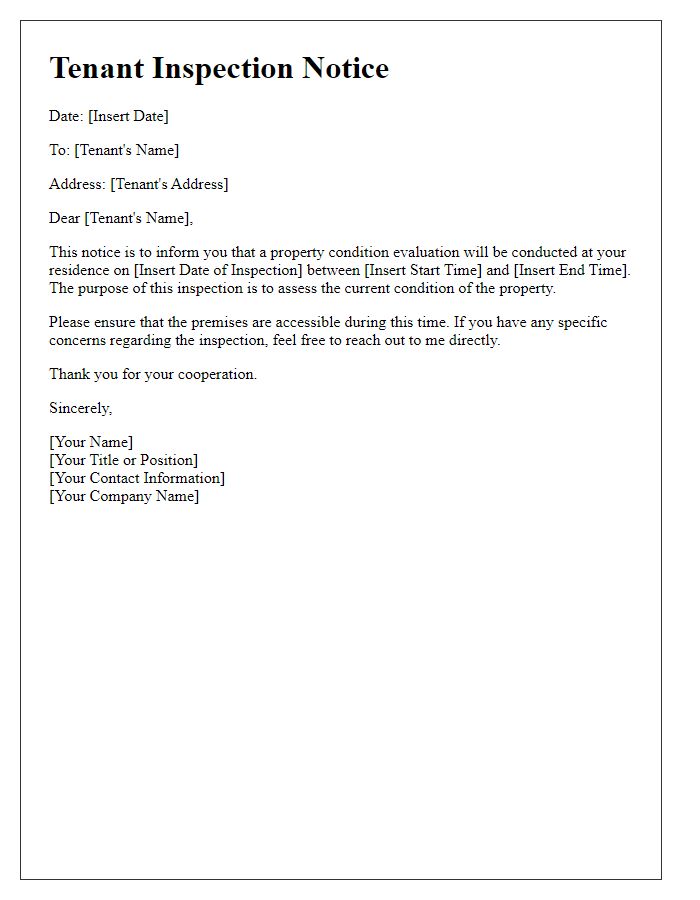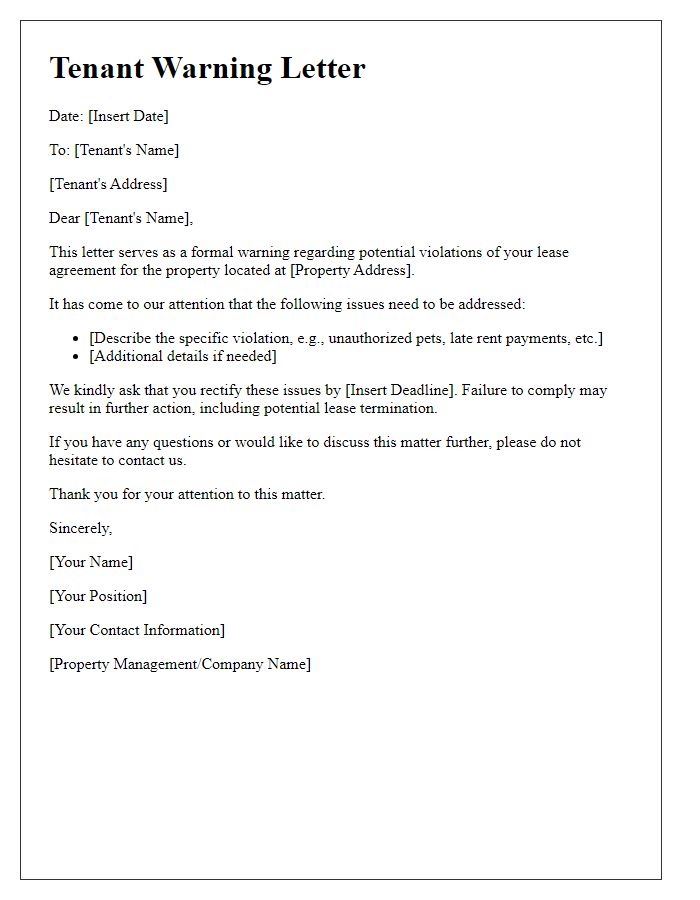Are you a tenant dealing with a property that's seen better days? It can be frustrating when your living space doesn't meet the standards you expect, especially if it seems like your concerns are being overlooked. Whether it's maintenance issues or unsightly conditions, it's important to address these matters effectively. Join us as we explore a comprehensive letter template designed to help you report any neglected property issues to your landlord and advocate for a healthier living environment.

Detailed Property Description
The neglected property located at 123 Maple Street, Springfield (a charming mid-century home in a suburban neighborhood) exhibits several concerning signs of disrepair. The exterior shows faded paint, peeling from the wooden siding, particularly on the north and west walls, exposing the underlying wood to moisture and potential insect damage. The front lawn, once lush and green, is now overgrown with weeds and littered with debris, indicating a lack of maintenance. Gutter systems are clogged with leaves and debris, causing water to overflow and accumulate, potentially leading to foundation issues. Windows are also a point of concern, with broken panes and damaged screens allowing pests to invade the interior. Inside, the living room walls bear stains from water damage, likely due to the aforementioned gutter issues, and the carpet is stained and worn, showing clear neglect. In the kitchen, appliances, like the refrigerator and stove from the mid-2000s, remain unclean, with food residue and grime noticeable. Overall, the property, which once held historical charm, requires urgent attention and restorative maintenance to prevent further deterioration.
Specific Neglect Issues
Tenants often face specific neglect issues in rental properties, which can significantly affect their living conditions. Examples include excessive mold growth due to inadequate ventilation (common in bathrooms without exhaust fans) or water leaks from roofing (often resulting from worn-out shingles) causing structural damage. Problems can also be seen in pest infestations, such as rodents or insects (like cockroaches), due to lack of proper sanitation measures. Electrical issues, particularly outdated wiring (prevalent in homes built before 1980), may pose safety hazards. Plumbing neglect, characterized by frequent clogs and low water pressure, can hinder daily activities. Addressing these concerns with documentation is crucial for ensuring tenant rights and encouraging property owners to uphold maintenance standards.
Photographic Evidence
Maintaining a rental property requires the tenant to uphold certain standards of cleanliness and care. Photographic evidence illustrates instances of neglect, such as damage to walls from unapproved alterations or excessive dirt build-up in kitchen areas. In specific cases, mold growth, which can pose health risks, may be documented; properties in humid climates (like Florida) can be particularly vulnerable. Appliances, such as refrigerators or stoves, may show signs of misuse; improper handling can lead to costly repairs. Additionally, outdoor spaces may require attention, with overgrown vegetation affecting not just aesthetics but potential pest infestations. Documenting these conditions ensures accountability and serves as a basis for necessary action.
Request for Repairs or Action
Neglected properties can pose significant risks to health and safety, particularly in residential buildings, such as apartments and houses. Common issues include plumbing leaks, which can lead to mold growth over time, and deteriorating electrical wiring, potentially causing fire hazards. Inadequate heating systems, especially in areas like the Northeast United States during winter months, can create unsafe living conditions. External maintenance issues, such as broken fences or overgrown landscaping, may reduce property value and attract pests. Prompt action from property management is essential to address these concerns and ensure compliance with local housing regulations, thus maintaining tenant wellbeing and property integrity.
Contact Information for Follow-Up
Tenant neglect can significantly impact property condition and value. It is crucial to document specific issues, such as water damage (often noted at moisture levels over 15% in drywall), pest infestations (with common critters like rodents or cockroaches), and structural breaches (including cracks above 1/8 inch in walls). By compiling a detailed report with photographs and timestamps, landlords can establish a clear timeline of neglect. Important information such as the property address (including zip code), tenant's name, and lease expiration date should be included for effective follow-up communication. When reporting, ensure to contact local housing authorities or property management companies that have jurisdiction over tenant disputes.
Letter Template For Tenant Neglected Property Report Samples
Letter template of tenant maintenance request follow-up for unaddressed concerns.

Letter template of tenant property condition assessment and improvement suggestions.

Letter template of tenant lease reminder concerning property upkeep responsibilities.

Letter template of tenant nuisance report related to property management.

Letter template of tenant standards compliance check-in for rental obligations.

Letter template of tenant inspection notice for property condition evaluation.








Comments